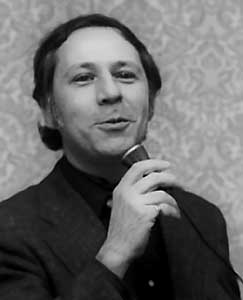
Benjamin William Bova was an American writer and editor. During a writing career of 60 years, he was the author of more than 120 works of science fact and fiction, an editor of Analog Science Fiction and Fact, for which he won a Hugo Award six times, and an editorial director of Omni; he was also president of both the National Space Society and the Science Fiction Writers of America.

Ursula Kroeber Le Guin was an American author best known for her works of speculative fiction, including science fiction works set in her Hainish universe, and the Earthsea fantasy series. She was first published in 1959, and her literary career spanned nearly sixty years, producing more than twenty novels and over a hundred short stories, in addition to poetry, literary criticism, translations, and children's books. Frequently described as an author of science fiction, Le Guin has also been called a "major voice in American Letters". Le Guin said she would prefer to be known as an "American novelist".

Lyon Sprague de Camp was an American writer of science fiction, fantasy and non-fiction. In a career spanning 60 years, he wrote over 100 books, including novels and works of non-fiction, including biographies of other fantasy authors. He was a major figure in science fiction in the 1930s and 1940s.
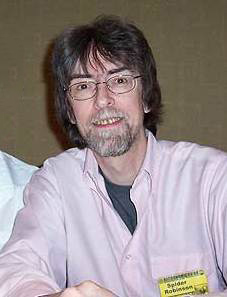
Spider Robinson is an American-born Canadian science fiction author. He has won a number of awards for his hard science fiction and humorous stories, including the Hugo Award 1977 and 1983, and another Hugo with his co-author and wife Jeanne Robinson in 1978.

The Magazine of Fantasy & Science Fiction is a U.S. fantasy and science-fiction magazine, first published in 1949 by Mystery House, a subsidiary of Lawrence Spivak's Mercury Press. Editors Anthony Boucher and J. Francis McComas had approached Spivak in the mid-1940s about creating a fantasy companion to Spivak's existing mystery title, Ellery Queen's Mystery Magazine. The first issue was titled The Magazine of Fantasy, but the decision was quickly made to include science fiction as well as fantasy, and the title was changed correspondingly with the second issue. F&SF was quite different in presentation from the existing science-fiction magazines of the day, most of which were in pulp format: it had no interior illustrations, no letter column, and text in a single-column format, which in the opinion of science-fiction historian Mike Ashley "set F&SF apart, giving it the air and authority of a superior magazine".

Zenna Chlarson Henderson was an American elementary school teacher and science fiction and fantasy author. Her first story was published in The Magazine of Fantasy & Science Fiction in 1951. Her work is cited as pre-feminist, often featuring middle-aged women, children, and their relationships, but with stereotyped gender roles. Many of her stories center around humanoid aliens called "The People", who have special powers. Henderson was nominated for a Hugo Award in 1959 for her novelette Captivity. Science fiction authors Lois McMaster Bujold, Orson Scott Card, Connie Willis, Dale Bailey, and Kathy Tyers have cited her as an influence on their work.

The Stars My Destination is a science fiction novel by American writer Alfred Bester. Its first publication was in book form in June 1956 in the United Kingdom, where it was titled Tiger! Tiger!, named after William Blake's 1794 poem "The Tyger", the first verse of which is printed as the first page of the novel. The book remains widely known under that title in the markets in which this edition was circulated. It was subsequently serialized in the American Galaxy Science Fiction magazine in four parts, beginning in October 1956. A working title was Hell's My Destination; the book was also associated with the name The Burning Spear. It would prove to be Bester's last novel for 19 years.
Rex Warner was an English classicist, writer, and translator. He is now probably best remembered for The Aerodrome (1941). Warner was described by V. S. Pritchett as "the only outstanding novelist of ideas whom the decade of ideas produced".

Tanith Lee was a British science fiction and fantasy writer. She wrote more than 90 novels and 300 short stories, and was the winner of multiple World Fantasy Society Derleth Awards, the World Fantasy Lifetime Achievement Award and the Bram Stoker Award for Lifetime Achievement in Horror. She also wrote a children's picture book, and many poems. She wrote two episodes of the BBC science fiction series Blake's 7. She was the first woman to win the British Fantasy Award best novel award, for her book Death's Master (1980).

Jack Dann is an American writer best known for his science fiction, as well as an editor and a writing teacher, who has lived in Australia since 1994. He has published over seventy books, the majority being as editor or co-editor of story anthologies in the science fiction, fantasy and horror genres. He has published nine novels, numerous shorter works of fiction, essays, and poetry, and his books have been translated into thirteen languages. His work, which includes fiction in the science fiction, fantasy, horror, magical realism, and historical and alternative history genres, has been compared to Jorge Luis Borges, Roald Dahl, Lewis Carroll, J. G. Ballard, and Philip K. Dick.

Robin McKinley is an American author best known for her fantasy novels and fairy tale retellings. Her 1984 novel The Hero and the Crown won the Newbery Medal as the year's best new American children's book. In 2022, the Science Fiction and Fantasy Writers Association named her the 39th Damon Knight Memorial Grand Master in recognition of her significant contributions to the literature of science fiction and fantasy.
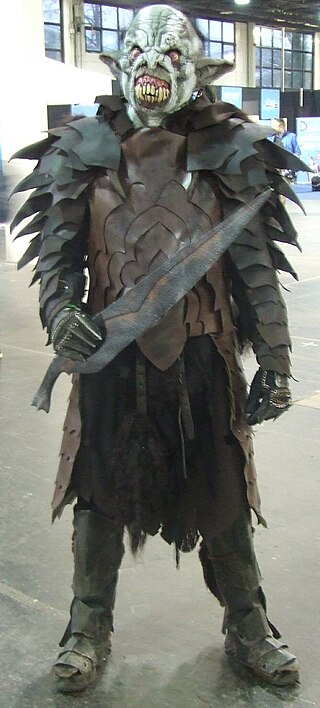
Literature has addressed the supernatural and the fantastic from its beginning, as in the romances of medieval Europe. The first works of the modern genre of fantasy were created by George MacDonald with works such as the 1858 Phantastes, and William Morris with fantasies such as the 1896 The Well at the World's End; both have been called the "father of fantasy", as for different reasons has an author of a later generation, J. R. R. Tolkien (1892–1973). H. Rider Haggard's 1887 fantasy adventure novel She was similarly influential. The term "fantasy" was first used to denote the literary genre in 1949.

Robert Paul Holdstock was an English novelist and author best known for his works of Celtic, Nordic, Gothic and Pictish fantasy literature, predominantly in the fantasy subgenre of mythic fiction.

Lavondyss also titled Lavondyss: Journey to an Unknown Region is a fantasy novel by British writer Robert Holdstock, the second book in his Mythago Wood series. Lavondyss was originally published in 1988. The name of the novel hints at the real and mythological locales of Avon, Lyonesse, Avalon and Dis; within the novel Lavondyss is the name of the remote, ice-age heart of Ryhope wood.

Infinity Science Fiction was an American science fiction magazine, edited by Larry T. Shaw, and published by Royal Publications. The first issue, which appeared in November 1955, included Arthur C. Clarke's "The Star", a story about a planet destroyed by a nova that turns out to have been the Star of Bethlehem; it won the Hugo Award for that year. Shaw obtained stories from some of the leading writers of the day, including Brian Aldiss, Isaac Asimov, and Robert Sheckley, but the material was of variable quality. In 1958 Irwin Stein, the owner of Royal Publications, decided to shut down Infinity; the last issue was dated November 1958.

Typewriter in the Sky is a science fantasy novel by American writer L. Ron Hubbard. The protagonist Mike de Wolf finds himself inside the story of his friend Horace Hackett's book. He must survive conflict on the high seas in the Caribbean during the 17th century, before eventually returning to his native New York City. Each time a significant event occurs to the protagonist in the story he hears the sounds of a typewriter in the sky. At the story's conclusion, de Wolf wonders if he is still a character in someone else's story. The work was first published in a two-part serial format in 1940 in Unknown Fantasy Fiction. It was twice published as a combined book with Hubbard's work Fear. In 1995 Bridge Publications re-released the work along with an audio edition.

Samuel R. "Chip" Delany is an American writer and literary critic. His work includes fiction, memoir, criticism, and essays on science fiction, literature, sexuality, and society. His fiction includes Babel-17, The Einstein Intersection ; Nova, Dhalgren, the Return to Nevèrÿon series, and Through the Valley of the Nest of Spiders. His nonfiction includes Times Square Red, Times Square Blue, About Writing, and eight books of essays. He has won four Nebula awards and two Hugo Awards, and he was inducted into the Science Fiction and Fantasy Hall of Fame in 2002.
Recursive science fiction is a subgenre of science fiction, which itself takes the form of an exploration of science fiction within the narrative of the story.
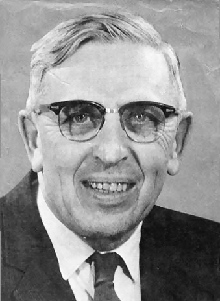
Clifford Donald Simak was an American science fiction writer. He won three Hugo Awards and one Nebula Award. The Science Fiction Writers of America made him its third SFWA Grand Master, and the Horror Writers Association made him one of three inaugural winners of the Bram Stoker Award for Lifetime Achievement.
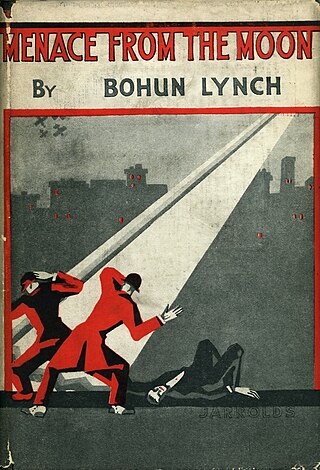
Menace from the Moon is a 1925 science fiction novel by English writer Bohun Lynch, part of an "early twentieth-century flood of lunar fantasies" inaugurated by H. G. Wells' The First Men in the Moon (1901).

















